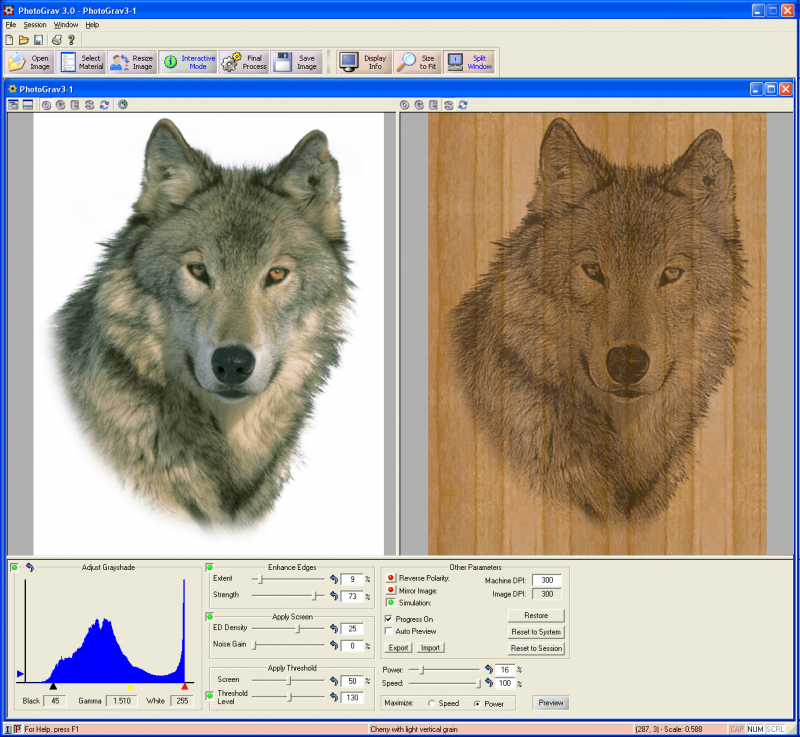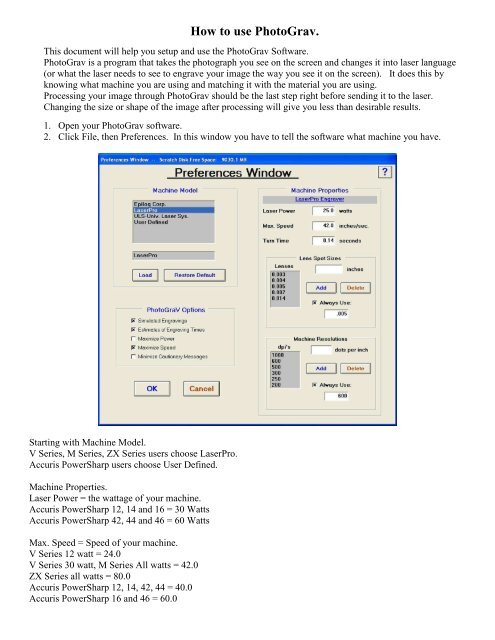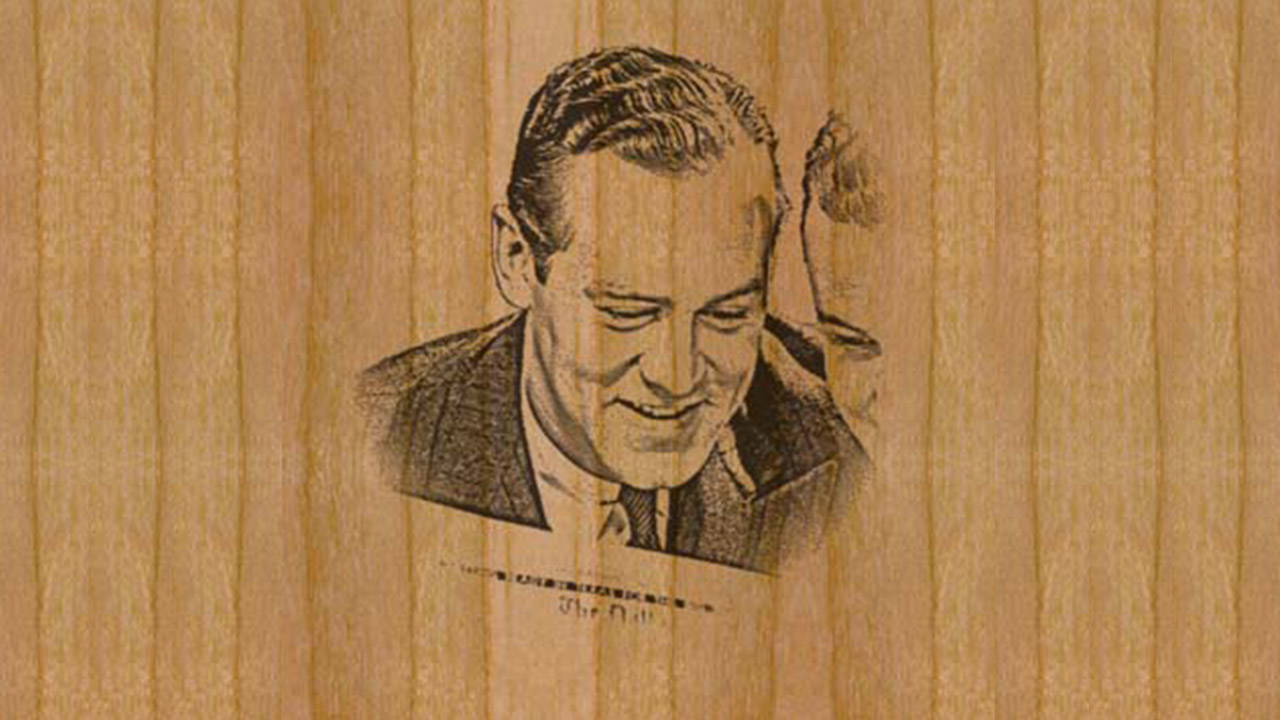

Back then I knew Photoshop fairly well (Photoshop5). Some years back I was in the imaging biz. I have learned over the last couple of weeks Corel Paint, Corel DrawX3 and Photograv-learned as best as I can without a machine. Its way overpriced imho if you intend to use it occasionally and it hasnt been updated in 4-5 yrs either.

It is not only good for Photos, but also will enable you to engrave complex multicoloured/complex fill vector images with excellent results. You can do similar yourself, but you jump thru hoops to do so and your chances of success are much lower. It processes the pic so that you have like a 95%+ chance of it coming out acceptably. So doing this makes the individual dots of the dithered image stand out better and creates a richer looking image. Often a single hit of the laser doesn't have the same effect on the material as a group of hits next to each other. That means for every dot in the Photograv image the laser is hitting the material 4 times. I then send it to the laser and engrave at 600 dpi. I feel this gives a much richer result on certain materials.įor example I will crop and enhance my image in Photoshop and then export it at 300 dpi to Photograve, where it gets dithered at 300 dpi. One of the main reasons I like to convert an image to a dither pattern before it goes to the laser is that I will often convert to a dither pattern at a different resolution than I laser at. Most Photoshop experts might not care about that extra little control, but personally I like it. I am very experienced in PhotoShop and can get almost the same results in Photoshop as in PhotoGrav, but Photograv has additional controls over the conversion that allow subtle increases in quality which I like.
#My laser will not engrave any photograv image driver#
You can also use PhotoShop or PhotoPaint to convert an image to a dither pattern, but those are automatic conversions like the Epilog driver and lack the extra level of interactive controls that Photograve gives you. Photograv converts images into that same style of dithered dot pattern, but gives you much more control over the conversion and the quality of the image. If you select "Photograph" in the advanced tab of the Epilog driver it will print your photo using a dithering pattern, which gives a fairly decent photograph. I'd call it the "automatic transmission" for dealing with laser engraved photos. If you "really" know your stuff with Photoshop etc., you can prepare files that will rival the results of PhotoGraV.

What does Photograv do that I can't do by just sending a picture to my laser? Epilog Mini. Forgive me if this has been gone over many times.


 0 kommentar(er)
0 kommentar(er)
